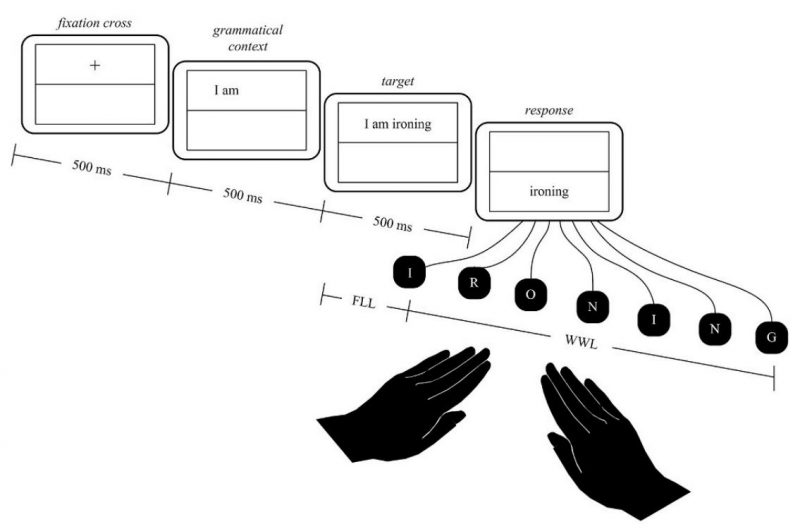21 de julio 2020
Abstract:
The speed of our hand movements can be affected by concurrent processing of manual action verbs (MaVs). Whereas this phenomenon is well established for native languages (L1s), it remains underexplored in late foreign languages (L2s), especially during highly automatized tasks. Here we timed keystroke activity while Spanish-English bilinguals copied MaVs, non-manual action verbs, and non-action verbs in their L1 and L2. Motor planning and execution dynamics were indexed by first-letter lag (the time-lapse between word presentation and first keystroke) and whole-word lag (the time-lapse between first and last keystroke), respectively. Despite yielding no effects on motor planning, MaVs facilitated typing execution in L1 but delayed it in L2, irrespective of the subjects’ typing skills, age of L2 learning, and L2 competence. Therefore, motor-language coupling effects seem to be present in both languages though they can arise differently in each. These results extend language grounding models, illuminating the role of embodied mechanisms throughout life.


